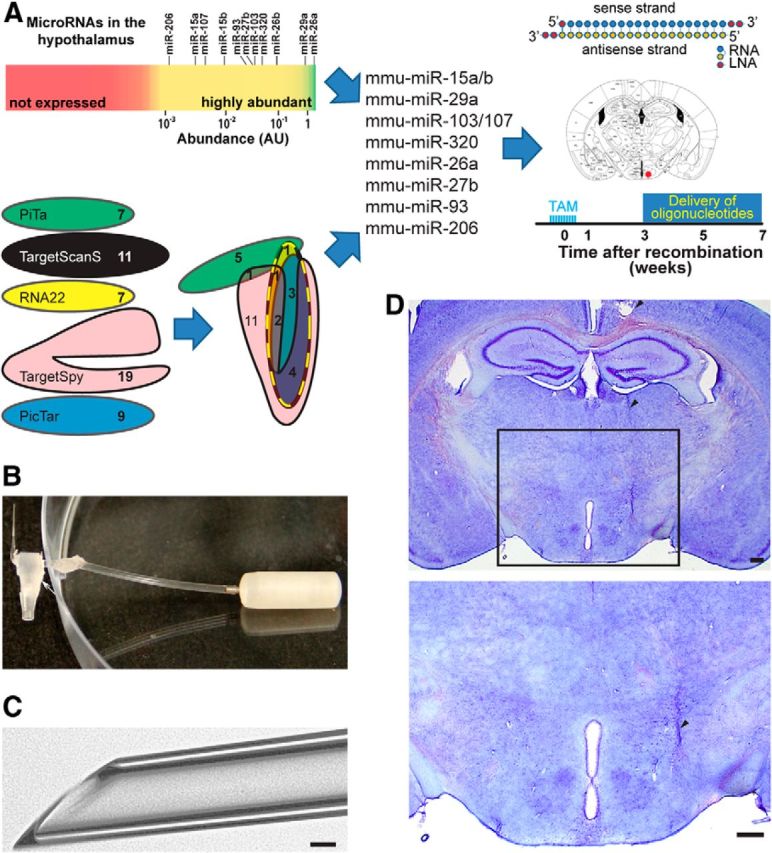Figure 6.

In silico and in vivo analyses to identify the microRNAs relevant for the DicerCKO phenotype. A, Workflow of candidate microRNAs identification. Top left, Abundant microRNAs in the mouse hypothalamus. Bottom left, Modified Euler diagram of the miTALOS strategy for predicting microRNA candidates putatively targeting the PI3K-Akt-mTOR pathway (dashed line). Selected 10 microRNA mimics designed with the indicated base composition were infused into ARC (right, red dot; Paxinos and Franklin, 2001). B, C, Glass microcannula (taper diameter, 50 ± 5 μm) connected to the osmotic pump (B) and its beveled taper (C) used to reduce damage to the tissue. The arrowhead indicates the taper of the microcannula and the arrow points to a T-connector attached to it. D, Position of a microcannula in the brain, stained by Nissl method. Arrowheads indicate microcannula track, positioned slightly lateral and dorsal to the ARC to avoid damage of this region. Scale bars: C, 250 μm; D, 50 μm.
